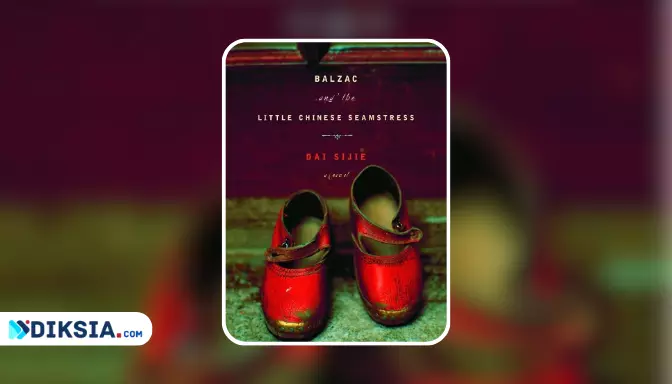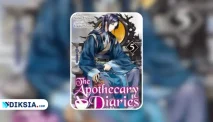Diksia.com - In the midst of the Cultural Revolution, two young boys are sent to a remote village for re-education. There, they meet a young seamstress who introduces them to the world of Western literature.
As they read forbidden books together, the boys find solace and escape from the harsh realities of their surroundings. But their newfound happiness is threatened when the seamstress is forced to leave.
The novel Balzac and the Little Chinese Seamstress is a semi-autobiographical story about the author’s own experiences during the Cultural Revolution.
The novel is set in a remote village in China, where two young boys, Luo and Ma, are sent for re-education. The boys are from wealthy families, and they are seen as enemies of the state.
In the village, the boys meet a young seamstress, whom they nickname “the Little Seamstress.” The Little Seamstress is beautiful and intelligent, and she introduces the boys to the world of Western literature. The boys are fascinated by the books, and they begin to read them voraciously.
As the boys read, they find solace and escape from the harsh realities of their surroundings. They learn about different cultures and different ways of thinking. They also learn about love and romance.
However, the boys’ newfound happiness is threatened when the Little Seamstress is forced to leave the village. The Little Seamstress is accused of being a spy, and she is taken away by the authorities.
The boys are devastated by the Little Seamstress’s departure. They feel lost and alone. However, they continue to read the books that she introduced them to, and they find comfort in the stories.
The novel Balzac and the Little Chinese Seamstress is a story about love, literature, and survival. It is a story about the power of books to transport us to different worlds and to help us cope with difficult times.
The Cultural Revolution
The Cultural Revolution was a period of political and social upheaval in China that lasted from 1966 to 1976. The Cultural Revolution was led by Mao Zedong, the chairman of the Chinese Communist Party.
Mao believed that the Cultural Revolution was necessary to purge China of the “four olds”: old ideas, old culture, old customs, and old habits.
During the Cultural Revolution, millions of people were persecuted, imprisoned, or killed. Many people were also sent to labor camps or to remote villages for “re-education.”
The Forbidden Books
The books that the boys read in Balzac and the Little Chinese Seamstress were all banned during the Cultural Revolution. These books included works by Western authors such as Balzac, Hugo, and Dumas.
The boys were fascinated by these books, and they found them to be a source of great comfort and inspiration. The books helped the boys to understand the world outside of China, and they also helped the boys to dream of a better future.
The Little Seamstress
The Little Seamstress is a complex and sympathetic character. She is beautiful, intelligent, and kind. She is also brave and resourceful.
The Little Seamstress is a victim of the Cultural Revolution, but she never gives up hope. She is determined to learn and to grow, and she is always looking for ways to help others.
The End of the Cultural Revolution
The Cultural Revolution ended in 1976 with the death of Mao Zedong. The end of the Cultural Revolution was a time of great hope for China. People were eager to rebuild their lives and to create a new future for their country.
The Legacy of Balzac and the Little Chinese Seamstress
Balzac and the Little Chinese Seamstress is a powerful and moving novel. It is a story about the power of love, the importance of literature, and the resilience of the human spirit.
The novel has been translated into over 30 languages, and it has been adapted into a film and a play. Balzac and the Little Chinese Seamstress is a classic of Chinese literature, and it is a story that continues to be read and enjoyed by people all over the world.
The Plot
The novel is narrated by an unnamed character who is a talented violinist. He and his best friend Luo, a gifted storyteller, are considered intellectuals by the government because their parents are doctors. They are sent to Phoenix of the Sky, a rural mountain near Tibet, to work in the coal mines and the rice fields and learn from the poor peasants.
The boys soon discover a hidden stash of forbidden Western books in the possession of Four-Eyes, another re-educated youth who is the son of a poet. They manage to borrow one of the books, Ursule Mirouët by Honoré de Balzac, and are captivated by its story. They decide to share it with the Little Seamstress, the daughter of the local tailor and the most beautiful girl in the region.
Luo falls in love with the Little Seamstress and tries to educate her with the books they steal from Four-Eyes. The narrator also develops feelings for her but keeps them to himself. The boys introduce her to a new world of literature and imagination that changes her life.
However, their idyllic romance is threatened by the harsh realities of the Cultural Revolution. The boys face dangers from the authorities, the villagers, and nature. The Little Seamstress becomes pregnant with Luo’s child and has to undergo a secret abortion. She also realizes that she wants more than what the mountain can offer her. She decides to leave the village and pursue her dreams in the city.
The novel ends with Luo burning all the books they have read as a farewell gesture to the Little Seamstress. The narrator returns to Chengdu and learns that she has become a successful tailor in Shenzhen. He also finds out that she has written a book about her life on the mountain, titled Balzac and the Little Chinese Seamstress.
The Themes
One of the main themes of Balzac and the Little Chinese Seamstress is education, re-education, and the Cultural Revolution. The novel depicts how Mao Zedong’s campaign to eradicate bourgeois influences and promote communist ideology affected millions of young people who were forced to leave their homes and undergo re-education by working in rural areas. The novel shows how this policy was oppressive, cruel, and ineffective.
Another theme is coming of age. The novel portrays how Luo, the narrator, and the Little Seamstress grow up and mature through their experiences on the mountain. They learn about love, friendship, loyalty, betrayal, courage, sacrifice, and freedom. They also discover their own identities and aspirations.
A third theme is storytelling, censorship, and power. The novel illustrates how storytelling can be a form of resistance and empowerment in a society that bans and burns books. The boys use storytelling to entertain themselves and others, to educate themselves and others, to express themselves and others, and to transform themselves and others. Storytelling also helps them cope with their hardships and challenges.
A fourth theme is friendship and loyalty. The novel explores how Luo and the narrator support each other through thick and thin. They share their joys and sorrows, their secrets and dreams, their books and stories. They also help each other survive their ordeals on the mountain.
A fifth theme is lost innocence. The novel depicts how Luo, the narrator, and the Little Seamstress lose their innocence as they face violence, injustice, corruption, poverty, disease, death, abortion, separation, and betrayal on the mountain. They also lose their innocence as they read books that expose them to different perspectives and realities.
The Reception
Balzac and the Little Chinese Seamstress was first published in French in 2000 and translated into English in 2001. It has been translated into 25 languages as of 2017. It has won several literary awards in France and has been praised by critics worldwide.
The novel has been praised for its lyrical prose style that blends humor with poignancy, for its vivid and authentic portrayal of life during the Cultural Revolution, for its engaging and memorable characters, for its rich and diverse cultural references, and for its universal and timeless themes.
The novel has also been criticized for its lack of historical accuracy and political depth, for its romanticization and simplification of the Cultural Revolution, for its stereotypical and sexist depiction of the Little Seamstress, and for its ambiguous and unsatisfying ending.
The Conclusion
Balzac and the Little Chinese Seamstress is a story that will stay with you long after you finish reading it. It is a story about love, loss, hope, and the power of literature to change lives.
Balzac and the Little Chinese Seamstress is a novel that celebrates the power of literature and storytelling in the face of oppression and adversity. It is a novel that explores the complexities of love, friendship, loyalty, and identity in a turbulent and transformative period of history. It is a novel that resonates with readers of all ages and backgrounds.






